The Best Reef Safe Sunscreen: protecting your skin and our oceans
By choosing the best reef-safe sunscreen, you're not just protecting your skin—you're helping preserve the biodiversity of our oceans for generations to come.
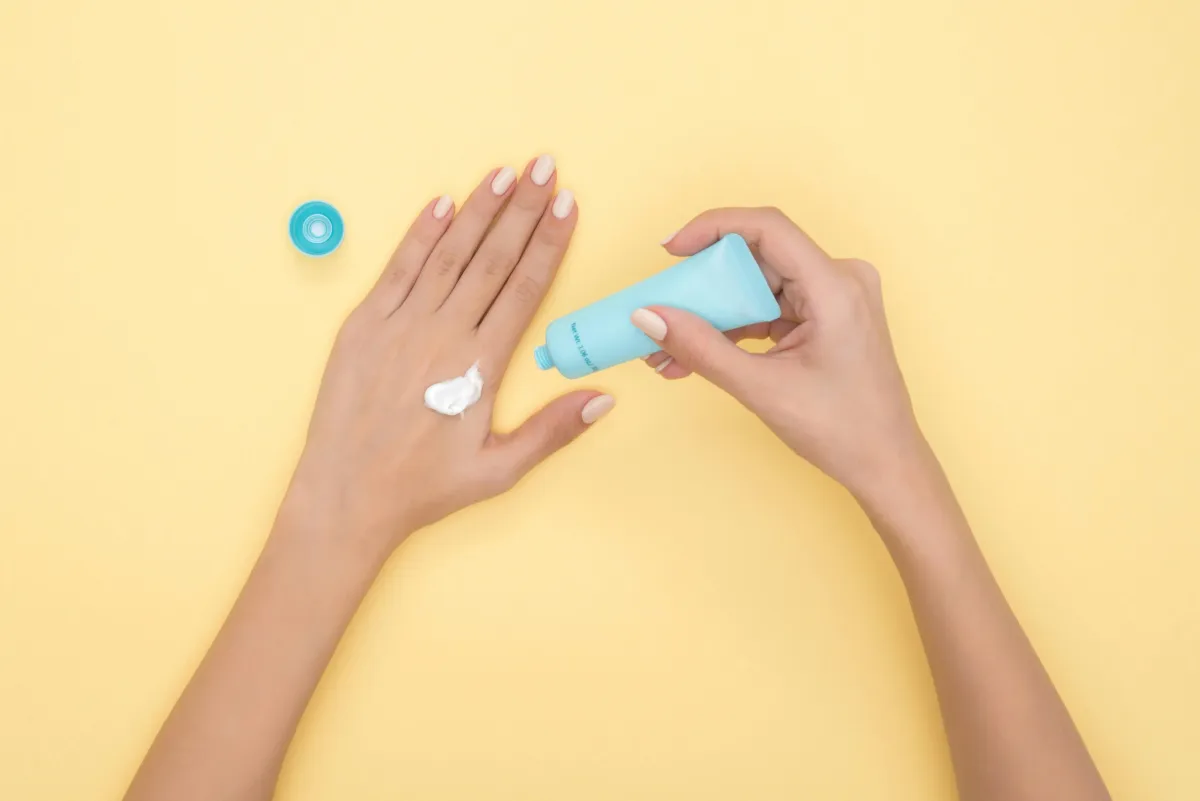
The best reef-safe sunscreen options allow us to care for our skin while minimizing harm to coral reefs and marine life.
According to research published in Archives of Environmental Contamination and Toxicology, even small amounts of oxybenzone—a common chemical UV filter—can be toxic to coral reefs. Studies estimate that 14,000 tons of sunscreen wash into our oceans annually, with popular tourist destinations bearing the brunt of this pollution.
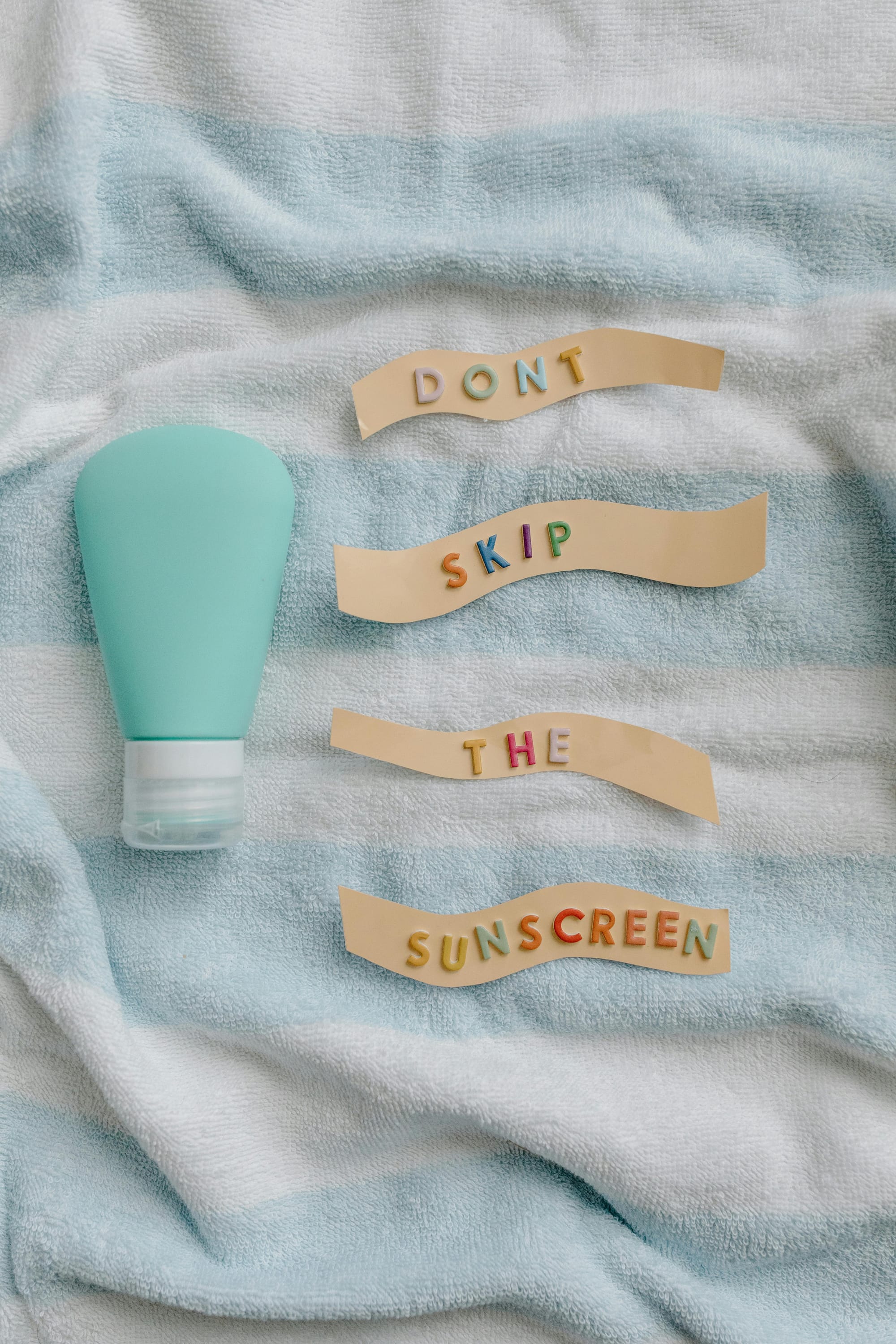
Research from the International Coral Reef Initiative shows that chemical filters like oxybenzone, octinoxate, and octocrylene can:
- Causes coral bleaching at concentrations as low as 62 parts per trillion (equivalent to one drop in six Olympic-sized swimming pools).
- Damage coral DNA and disrupt reproduction and growth.
- Impair photosynthesis in reef-building algae.
- Bioaccumulate in fish and other marine organisms
In a critical need to protect oceans, some U.S. destinations—including Hawaii, Palau, and the Virgin Islands—have banned some sunscreens because their formulas are harmful to marine ecosystems. Although they also have a short list of the best reef-safe sunscreens they recommend, these are certified and approved by the FDA.
What is the best reef-safe sunscreen?
The best reef-safe sunscreen options focus on reflecting UV rays rather than absorbing them. They avoid chemical filters, so mineral filters such as zinc oxide and titanium dioxide are used instead. In addition to protecting your skin from UVA and UVB rays, they also prevent damage to coral reefs.
Some of them are:
Raw Elements Face + Body SPF 30
- Function: Broad-spectrum UVA/UVB protection, water-resistant for 80 minutes.
- Active Ingredient: Non-nano zinc oxide (23%).
- Price: $19.49 to 26.99 for 3 oz.
- Where to buy: REI, Amazon, company website.
- Additional benefits: Certified organic ingredients, plastic-free packaging, suitable for sensitive skin.
If it isn’t produced by Mother Earth, it isn’t in our sunscreen. Non-Nano Zinc Oxide is our only active ingredient. All our inactive ingredients are either organic or natural and sustainably sourced.
- Raw Elements.
Raw Elements has certifications from: Leaping Bunny - Cruelty Free, Non-Nano Zinc Oxide, Reef Safe / Friendly, World Reef Day Founding Brand, EWG Top Rated, and From The USA.
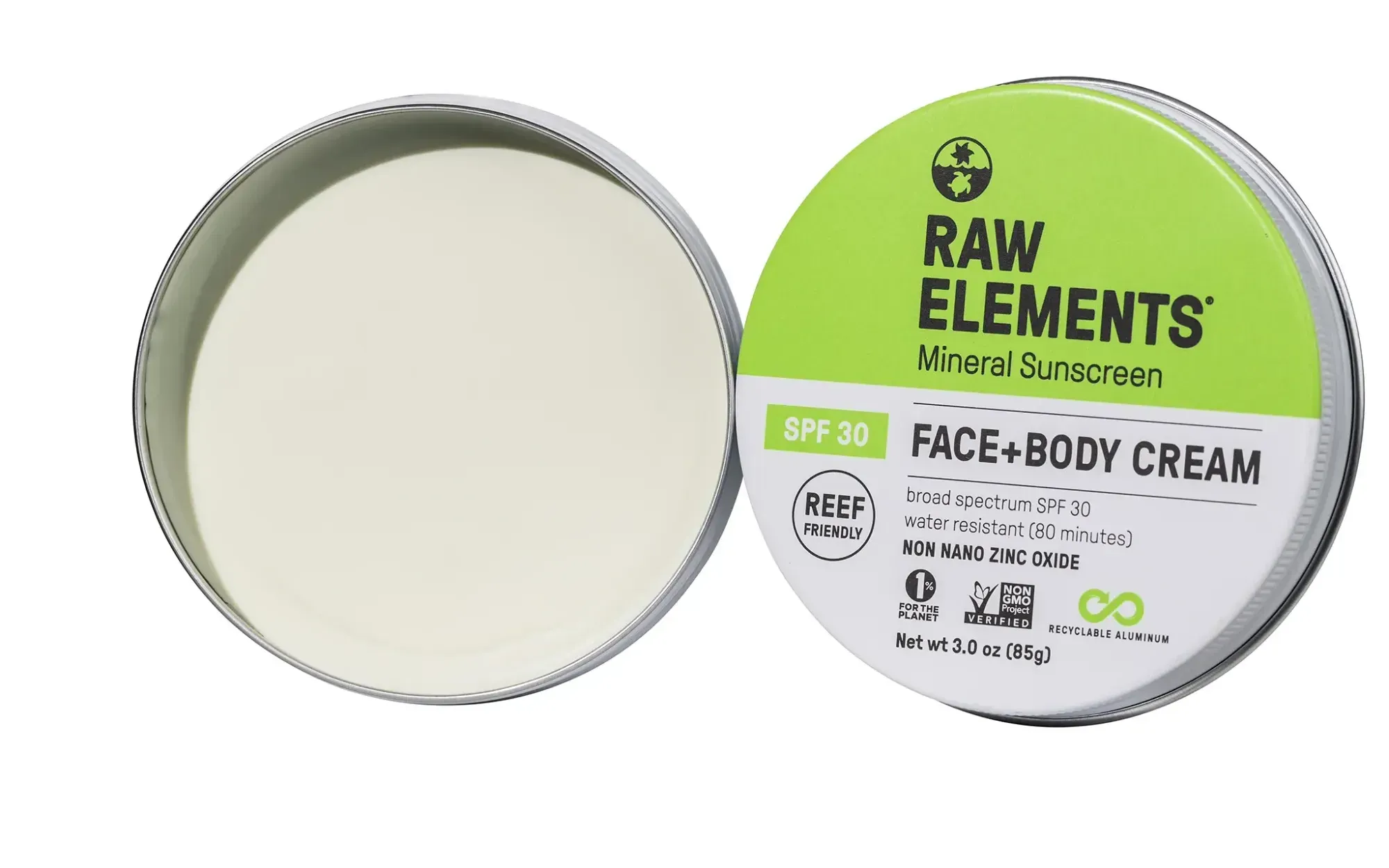
Stream2Sea Sport SPF 30
- Function: Broad-spectrum protection, biodegradable formula.
- Active Ingredient: Non-nano titanium dioxide (8.8%).
- Price: $16.95 to 18.95 for 3 oz.
- Where to buy: Marine supply stores and the company website.
- Additional benefits: Tested safe for freshwater fish and marine species, water-resistant.
Stream2Sea has the only products in the world tested and proven safe for C. elegans, freshwater fish, saltwater fish and coral larvae.
- Stream2Sea
This one is EWG VERIFIED™ certified, meaning it's 100% chemical-free, and they're a company that cares about your health and marine life.
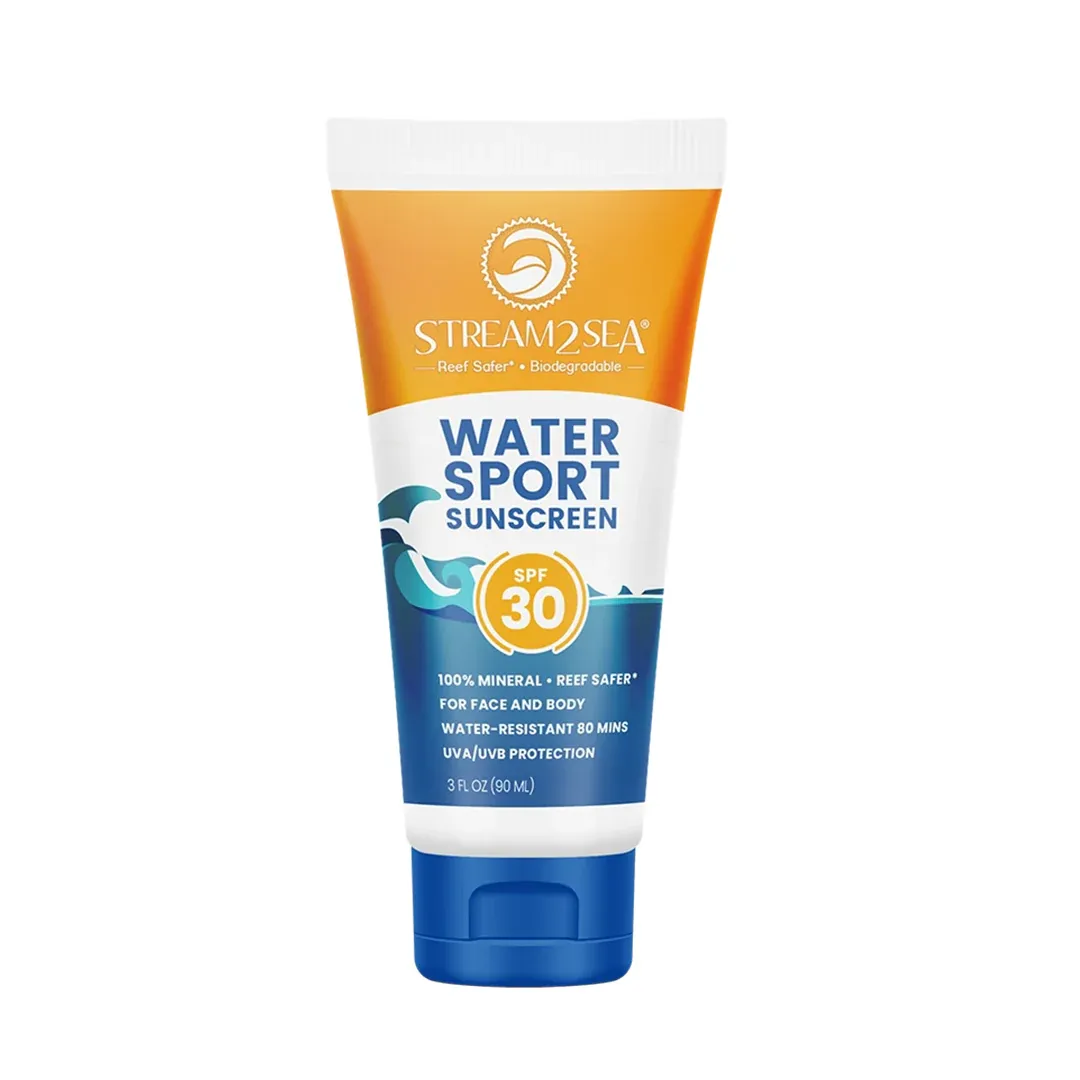
Thinksport SPF 50
- Function: High-protection formula, water-resistant for 80 minutes.
- Active Ingredient: Non-nano zinc oxide (20%).
- Price: $12.99 to 23.99 for 3 to 6 oz.
- Where to buy: Target, Whole Foods, Amazon.
- Additional benefits: Consistently top-rated by EWG for safety, no oily residue.
This brand isn't available for direct purchase on its website, but you can learn more about its social commitment and its official website.
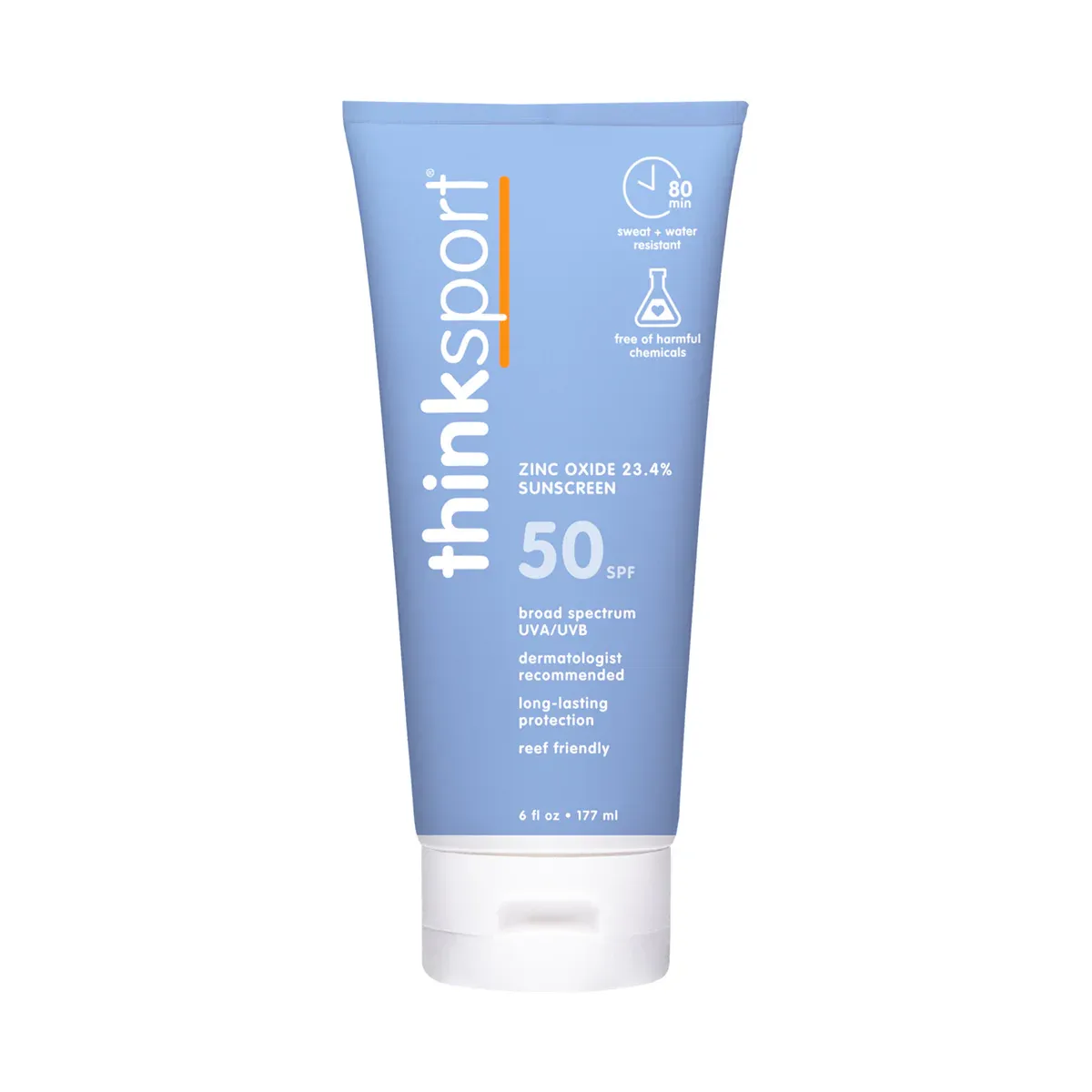
These brands are recommended because they don't contain any ingredients that have been found to cause harm to corals, but there may be other good options on the market.

FAQS
How can you be sure what the best reef-safe sunscreen is?
Made with Natural ingredients, it is biodegradable, labeled as reef-safe, chemical-free, and green.
What ingredients cause harm to coral reefs?
Avobenzone, Benzophenone-3, Butyl/Methoxydibenzoylmethane, Butylcarbamate, Butylparaben, Cetyl Dimethicone, Cinoxate/Cinnamate, Dimethyl Apramide, Dioxybenzone, Ensulizole, GMO’s, Hexyldecanol, Homosalate, Meradimate, Menthyl Anthranilate, Methlparaben, Methylbenzylidene, Nano-Particles, Octinoxate, Octocrylene, Octisalate, Octyl Salicyclate, Oxybenzone, Padimate O, PABA, Phenylbenzimidazole, Polyethylene, Propylparaben, Sulisobenzone, Synthetic Ingredients, Synthetic Fragrances, Synthetic Preservatives, Sulisobenzone, Titanium coated in Aluminum or Dimethicone and Trolamine Salicyclate.
How to know if a sunscreen is reef-safe?
Most of the time, these do not contain chemical ingredients and their formula only includes mineral ingredients such as zinc oxide and titanium dioxide.





